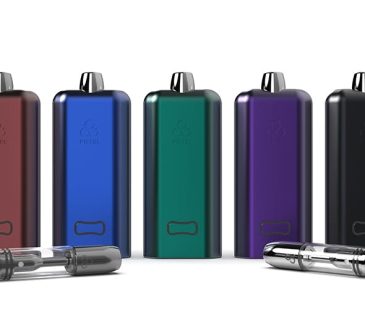When vapers inquire about the nicotine content in a cigarette, it is often because they are attempting to determine the appropriate nicotine strength for their e-liquid. The aim is to replicate the sensation they get from smoking and achieve a similar nicotine experience through vaping.
However, knowing the precise milligram amount of nicotine in a cigarette does not directly correlate to vaping. This is due to the substantial differences in delivery methods, and even an equal nicotine quantity will not provide the same impact when delivered through vaping as it would through smoking.
Nicotine is a multifaceted subject. While our focus primarily revolves around vaping as a publication, we recognize that many vapers were once smokers, and there is a significant interest among smokers in finding low-risk alternatives to cigarettes. Hence, we aim to explore all aspects of nicotine usage. Additionally, this topic holds inherent intrigue, especially considering the potential future developments, such as the FDA’s potential efforts to reduce nicotine levels in cigarettes to below addictive thresholds.
How much nicotine is in a cigarette?

The nicotine content in a cigarette can vary depending on several factors, including the brand, type of tobacco, and manufacturing processes. On average, a regular-sized cigarette typically contains around 12-20 milligrams of nicotine. However, it is important to note that not all the nicotine in a cigarette is absorbed by the smoker. Nicotine is partially lost through sidestream smoke and also during the combustion process.
It’s worth mentioning that the nicotine content alone does not determine the level of addiction or harm caused by smoking. The harmful effects of smoking are attributed to a combination of nicotine and the numerous toxic chemicals and carcinogens present in cigarette smoke.
It is crucial to understand that nicotine content in cigarettes can vary, and the best way to gauge nicotine intake is through personal experience. If you are considering transitioning from smoking to vaping or any other alternative nicotine product, it’s important to consult with professionals or seek guidance from reputable sources to find the appropriate nicotine strength that suits your needs and helps in your journey to reduce or quit smoking.
How much nicotine is in a cigar?

The nicotine content in cigars can vary depending on several factors, including the size, type, and blend of the cigar. Generally, cigars contain higher levels of nicotine compared to cigarettes. A typical large-sized cigar can contain anywhere from 100 to 200 milligrams of nicotine or even more, while smaller cigars may have lower nicotine content.
It’s worth noting that cigars are typically not meant to be inhaled like cigarettes, and the nicotine is primarily absorbed through the lining of the mouth and throat. However, even without inhaling, the absorption of nicotine can still occur to a certain extent.
Due to the higher nicotine content in cigars and the potential for nicotine absorption through the mucous membranes, it’s important to exercise caution when smoking cigars and be aware of the potential effects of nicotine.
If you are considering transitioning to alternative nicotine products or seeking lower-risk alternatives, it is advisable to explore options such as vaping or nicotine replacement therapies (NRTs) under the guidance of professionals or reputable sources.
What if cigarettes had NO nicotine?
In July 2017, former FDA commissioner Scott Gottlieb announced that the agency would initiate research to develop a plan aimed at reducing the nicotine levels in cigarettes to non-addictive levels.
The concept behind this plan is to remove the addictive potential of cigarettes while allowing high-nicotine alternatives like e-cigarettes and nicotine replacement therapy (NRT) products to remain available. The hope is that many smokers would transition to these lower-risk alternatives. Supporters of the plan argue that it could prevent youth experimenters from becoming addicted to cigarettes in the first place.
The idea of reducing nicotine in cigarettes is not a novel concept. Tobacco control scientists have been discussing this approach since at least 1994, and recently, clinical trials have been conducted involving the use of very low nicotine cigarettes (VLNC), also known as reduced-nicotine cigarettes.
These trials aim to assess the impact of cigarettes with significantly reduced nicotine content on smoking behavior and addiction. By studying the effects of VLNCs, researchers hope to gain insights into whether such products could effectively aid smokers in quitting or transitioning to alternative nicotine sources.
It’s important to note that reducing nicotine levels in cigarettes would likely involve complex regulatory processes and considerations. The feasibility, effectiveness, and potential unintended consequences of implementing such a strategy would require extensive research, analysis, and public input.
The exploration of reduced-nicotine cigarettes and related initiatives represents ongoing efforts to identify innovative approaches to tobacco control and harm reduction. Continued research and evaluation will be crucial to determine the potential benefits and drawbacks of reducing nicotine levels in cigarettes as part of comprehensive tobacco control strategies.
What would prevent a massive black market of nicotine-filled cigarettes?
The plan to reduce nicotine levels in cigarettes to non-addictive levels, known as VLNC, faces several significant challenges. Firstly, the implementation of such a plan would require an extended timeline, spanning across multiple administrations and FDA regulators. Moreover, enforcing the rule effectively would be crucial to prevent the emergence of a widespread black market for nicotine-filled cigarettes.
Furthermore, large-scale trials would be necessary to demonstrate the potential success of VLNCs. These trials would need to provide substantial evidence of the effectiveness of reduced-nicotine cigarettes in aiding smokers to quit or transition to lower-risk alternatives.
There is also the possibility that Congress could succumb to pressure from the cigarette industry and amend the Family Smoking Prevention and Tobacco Control Act, thereby eliminating the FDA’s authority to regulate nicotine content in cigarettes.
However, if the FDA manages to accomplish this ambitious goal and successfully eliminates 90 percent or more of the nicotine from cigarettes, it would be a remarkable achievement with profound political and public health implications. It would be one of the most significant events in decades, reflecting a major stride in tobacco control and harm reduction efforts.




